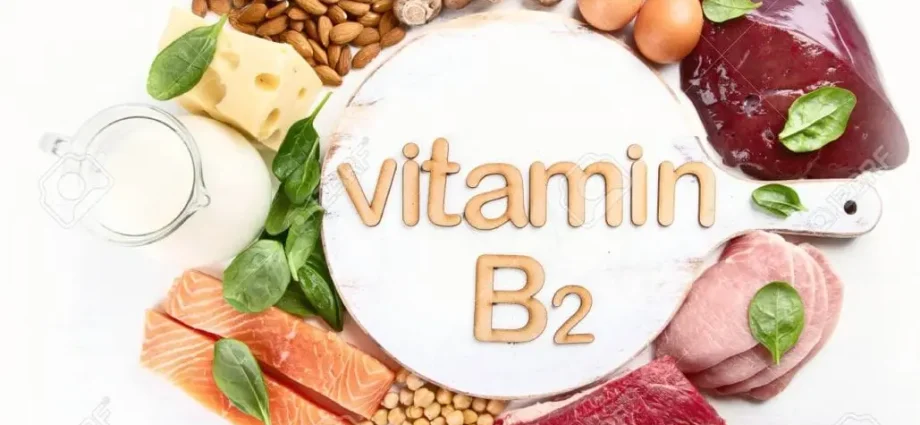Contents
Riboflavin, lactoflavin, vitamin G.
General characteristics of vitamin B2
Vitamin B2 belongs to flavins – a yellow substance (yellow pigment). It is stable in the external environment, tolerates heat well, but does not tolerate sunlight well, losing its vitamin properties under its influence.
In the human body, riboflavin can be synthesized by the intestinal flora.
Vitamin B2 rich foods
Indicated approximate availability in 100 g of product
The need for vitamin B2 increases with:
- great physical exertion;
- pregnancy and lactation;
- stress.
Digestibility
Although riboflavin is present in greens, they need to be boiled for good absorption.
Vitamin B2 is well absorbed by the body if there is food in the stomach and intestines, therefore it is good to take vitamin preparations with or immediately after meals.
Useful properties and its effect on the body
Vitamin B2 (Riboflavin) takes an active part in the formation of certain hormones and erythrocytes, the synthesis of ATP (adenosine triphosphoric acid – “fuel of life”), protects the retina from excessive exposure to UV rays, provides adaptation to darkness, increases visual acuity and perception of color and light.
Vitamin B2 plays an important role in the breakdown of proteins, fats and carbohydrates. It is necessary for the normal functioning of the body as a whole, because is a part of more than a dozen enzymes and flavoproteins – special biologically active substances.
Riboflavin is needed for the growth and renewal of tissues, has a positive effect on the state of the nervous system, liver, skin, mucous membranes. It is necessary for the normal development of the fetus during pregnancy and for the growth of children. Keeps skin, nails and hair healthy.
Interaction with other essential elements
Vitamin B2 together with ensures normal vision. With his participation,, and pass into active forms in the body.
Lack and excess of vitamin
Signs of Vitamin B2 Deficiency
- peeling of the skin on the lips, around the mouth, on the wings of the nose, ears and nasolabial folds;
- cracks in the corners of the mouth, the so-called seizures;
- feeling that sand has got into the eyes;
- itching, redness and tearing of the eyes;
- red or purple swollen tongue;
- slow healing of wounds;
- photophobia, phlegm;
- with a slight but long-term deficiency of vitamin B2, cracks on the lips may not appear, but the upper lip decreases, which is clearly noticeable in the elderly.
Factors affecting the content of Vitamin B2 in foods
During heat treatment, the content of vitamin B2 in food decreases in general by 5-40%. Riboflavin remains stable at high temperatures and acidity, but is easily destroyed in an alkaline environment, or under the influence of light.
Why Vitamin B2 Deficiency Occurs
Lack of vitamin B2 in the body causes diseases of the gastrointestinal tract, which disrupt the absorption of nutrients; deficiency in the diet of complete proteins; taking medications that are vitamin B2 antagonists.
The increased consumption of riboflavin, which occurs in infectious febrile diseases, thyroid diseases and cancer, also leads to a deficiency of vitamin B2.










